Your cart is currently empty!

The Coronation
‘The Coronation’ was a streamlined express passenger train introduced by the LNER in 1937 and ran between London King’s Cross and Edinburgh Waverley.

‘The Coronation’ was a streamlined express passenger train run by the London and North Eastern Railway between London King’s Cross and Edinburgh Waverley. Named to mark the coronation of King George VI and Queen Elizabeth, it was inaugurated on 5th July 1937. The down train (northbound) left London at 16:00hrs and arrived in Edinburgh at 22:00hrs; the up train (southbound) ran half an hour later.
The design was based on the first, very successful streamlined train, ‘The Silver Jubilee’, built in 1935, but instead of being painted silver and grey, it was given a two-tone blue livery, garter blue on the lower panels and the lighter Marlborough blue above. The colours were chosen from a group sponsored by the British Colour Council for the coronation of King George VI. Internally, it was decorated in the Art Deco style.
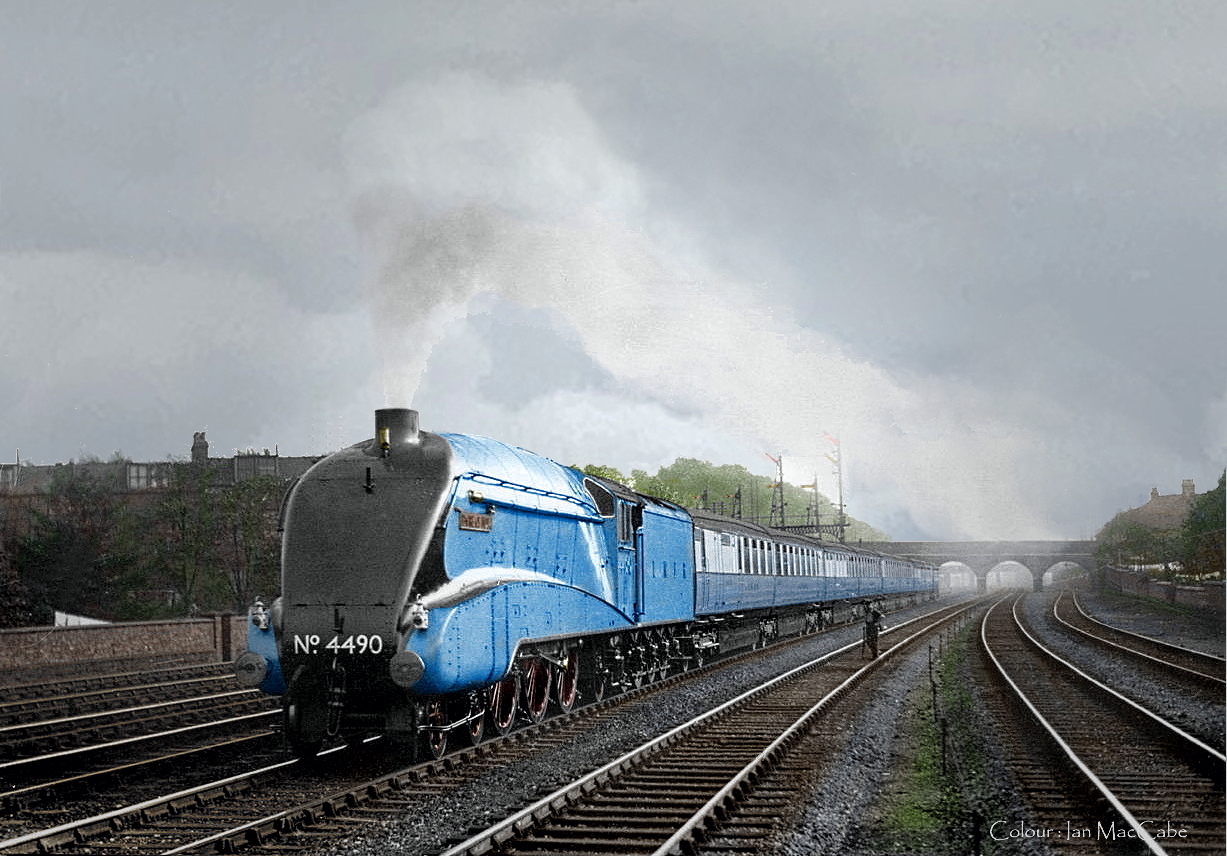
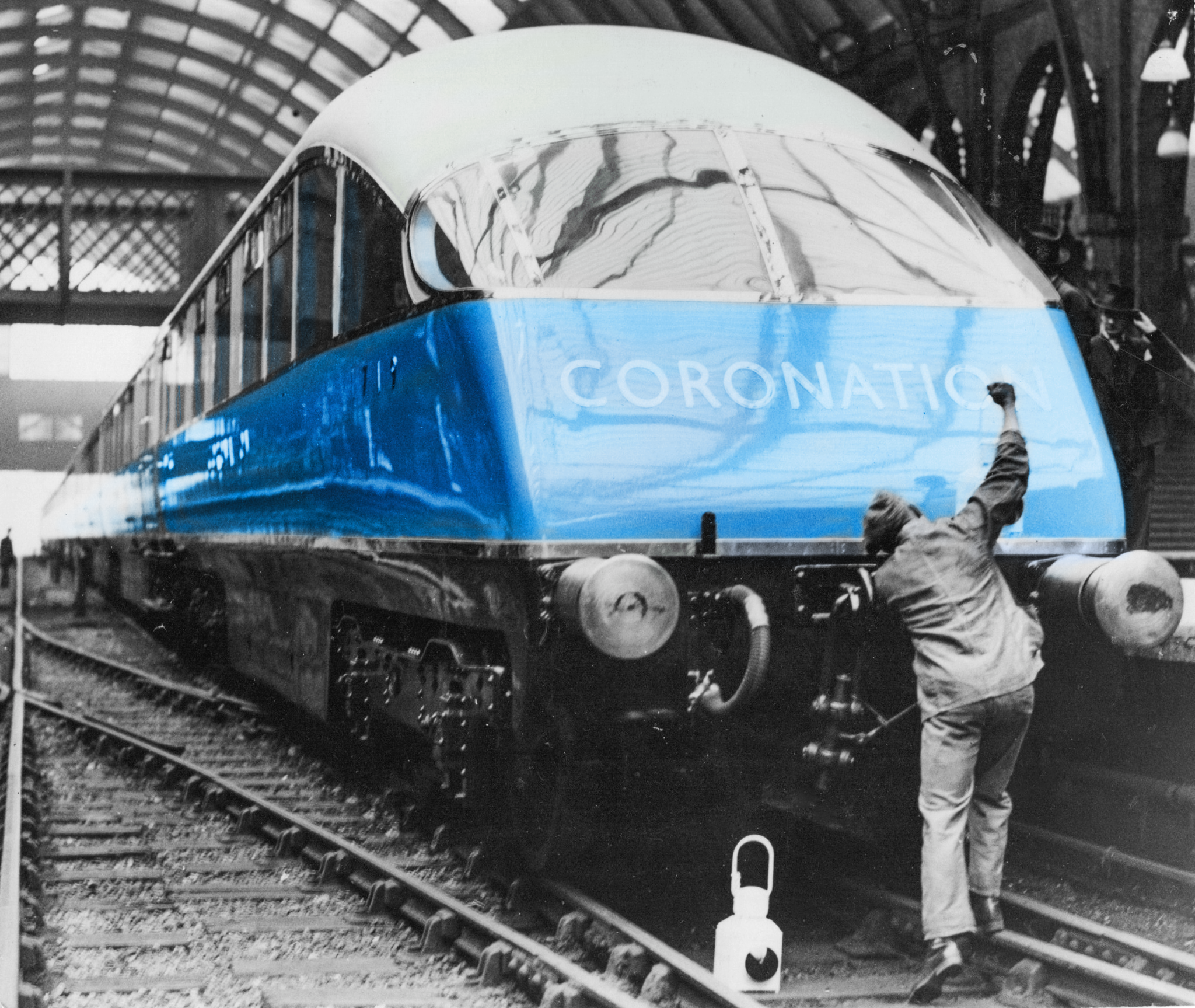
The train was formed of four two-car articulated units, with a ‘beaver-tail’ observation car added in summer, marshalled as follows on a southbound service from Edinburgh to London, the northbound service from London to Edinburgh would be marshalled the opposite way round with the Locomotive and observation car being coupled to the opposite ends.
Locomotive and tender
Brake Third + Kitchen Third: 42 seats
Open First + Open First: 48 seats
Open Third + Kitchen Third: 36 seats
Open Third + Brake Third: 66 seats
Observation car: 16 seats.


26 coaches were built – three of each type of articulated pair plus two observation cars, sufficient to form three eight-coach trains. Two of these, with the observation cars, were for use on ‘The Coronation’ and lettered accordingly; the third was spare, used for maintenance cover on both ‘The Coronation’ and ‘The West Riding Limited’, which used an almost-identical eight-coach train but lacked the observation car.
Unlike ‘The Silver Jublilee’, with its First class compartments, ‘The Coronation’ was entirely centre-gangwayed, although every bay in First class and every second bay in Third class was divided into compartments.


All seats (48 First and 168 Third) were reservable, those in First being movable armchairs. The Upholdtry was described as ‘uncut fawn moqette’; the carpets were green and the interior walls were decorated in two shades of grey-green ‘Rexine’ separated by a fretted trim.
The train had been designed with silent running in mind, and to this purpose it even had specially designed cutlery, with flat handles that would not rattle. The cutlery was also inscribed with the new LNER monogram.

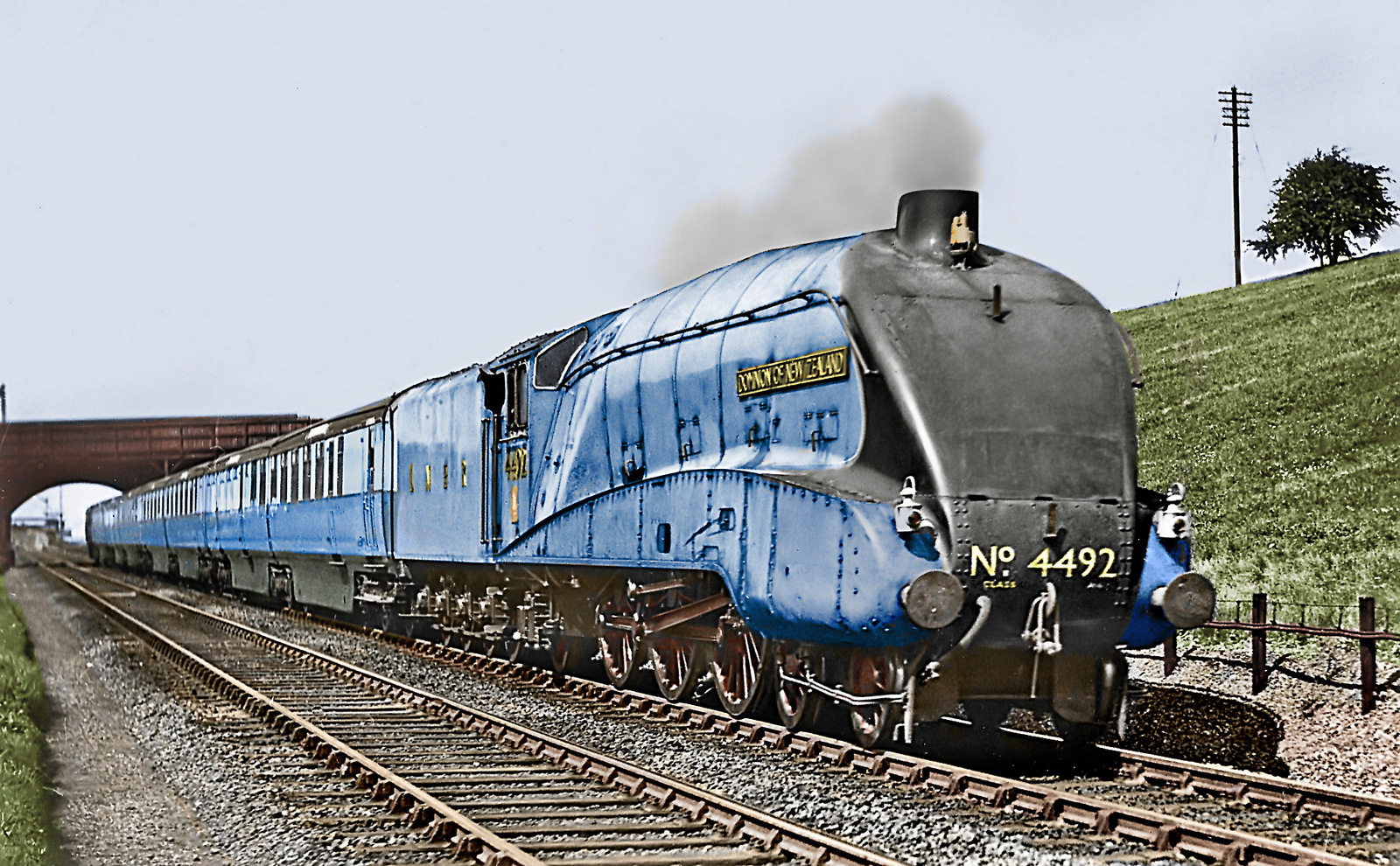
The train was usually hauled by a streamlined LNER Class A4 ‘Pacific’ locomotive, in a special garter blue livery with red wheels. From October 1937, this became the standard livery of the class. Five locomotives were specially named for the service:
No. 60009 (LNER No. 4488) Union of South Africa – preserved by Society President John Cameron and after a long main line career is now preserved on his farm at Balbuthie in Fife.
No. 4489 (BR No. 60010) Dominion of Canada – preserved at the Exporail: the Canadian Railway Museum at Saint-Constant, Quebec, Canada.
No. 4490 (BR No. 60011) Empire of India.
No. 4491 (BR No. 60012) Commonwealth of Australia.
No. 4492 (BR No. 60013) Dominion of New Zealand.
During a pre-launch run on 30th June 1937, the train in the charge of No. 4489 Dominion of Canada, reached 109mph on the retrun run to London.
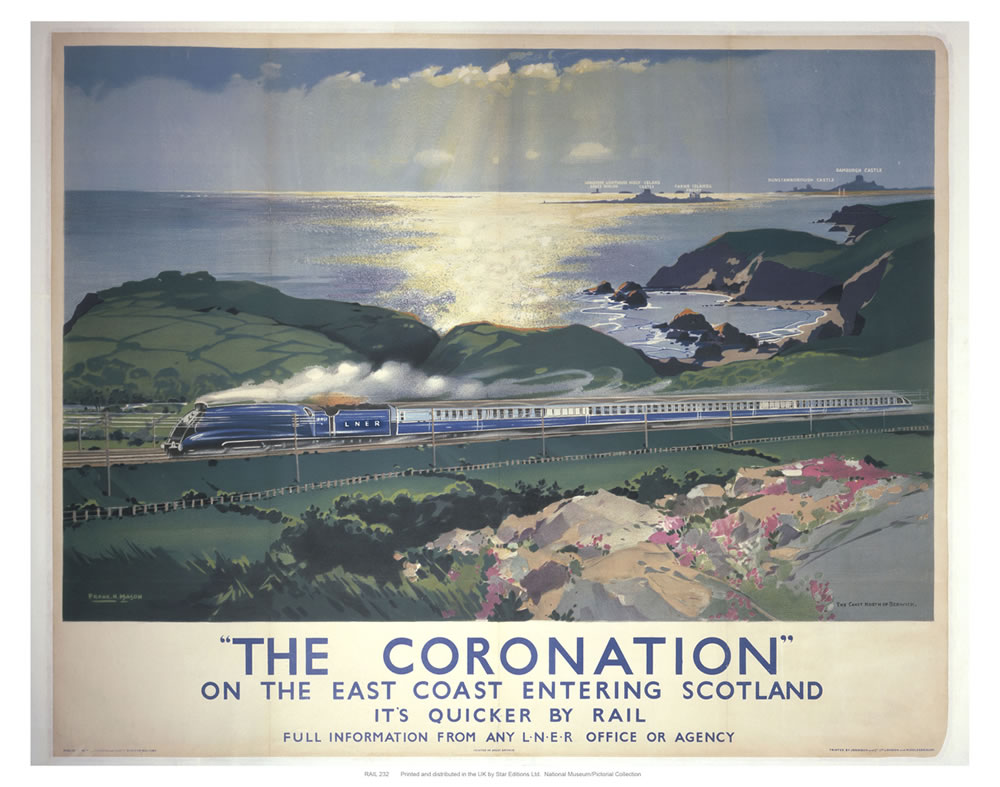
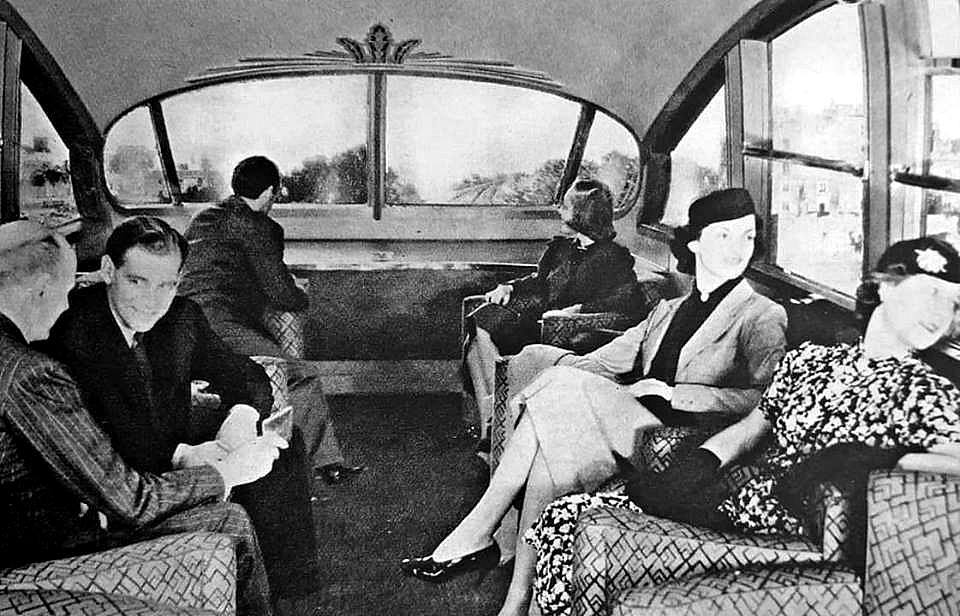
The Observation Cars had a distinctive ‘beaver tail’ shape. They ran in this form until the Second World War when the train’s coaches were put in store. In 1948, various vehicles returned to service as general passenger stock, but they never ran as a full set again – the Observation Cars were transferred to the West Highland line in 1956.
Their original observation end was found to give limited views, so British Railways rebuilt them with a more angled end and added larger windows, running in this form from 1959 to 1968.

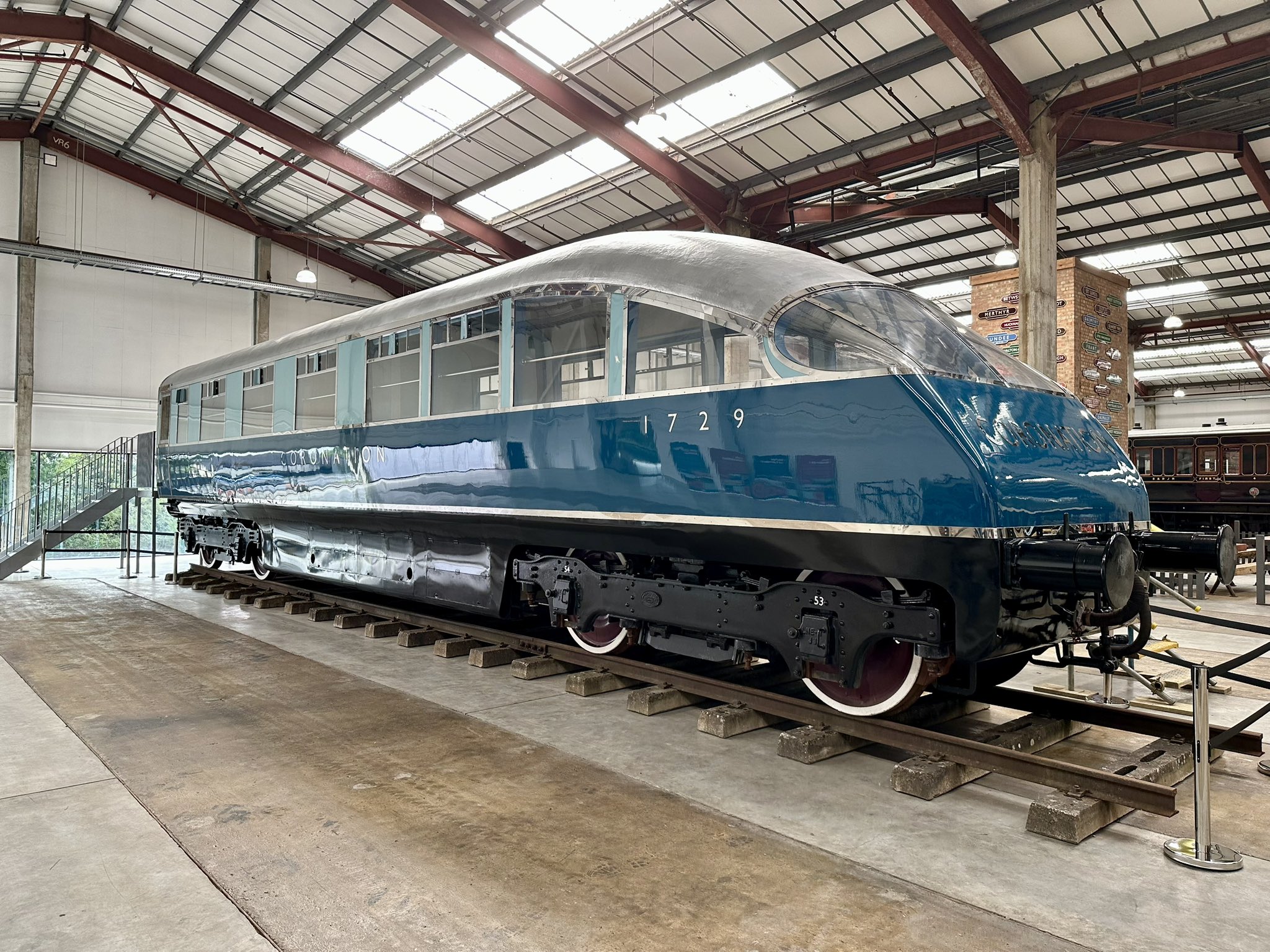
Both ‘beaver-tail’ Observation Cars from ‘The Coronation’ have survived, with No. 1729 (formerly owned by the Society) restored to original condition by Jeremy Hosking and No. 1719 restored to its rebuilt condition by Railway Vehicle Preservations.
